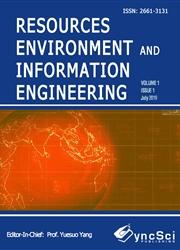Difference of rainfall-runoff models and effect on flood forecasting: A brief review
引用次数: 2
Abstract
Selecting a rainfall-runoff model for use in flood forecasting is not a direct decision and actually may contain the selection of more than one. There are a range of rainfall-runoff models for flow forecasting. They range in type from transfer function (empirical black box), through lumped conceptual to more physically-based distributed models. The rainfall-runoff models also are often accompanied by updating techniques for taking account of recent measurements of flow so as to improve the accuracy of model predictions in real-time. Against this variety of available modelling techniques, this study improved understanding of the most important and well known rainfall-runoff models for flood forecasting and highlighting their similarities and differences. Six models are selected in this study: the Probability Distributed Moisture (PDM) model, the Isolated Event Model (IEM), the US National Weather Service Sacramento model, the Grid Model, the Transfer Function (TF) model and the Physically Realisable Transfer Function (PRTF) model. The first three are conceptual soil moisture accounting models, with the Grid Model having a distributed formulation, whilst the TF and PRTF are “black box” time-series models. Also new model for the forecasting (e.g neural network (NN), fuzzy rule-based are reviewed. An important feature of the use of rainfall-runoff models in a real-time forecasting environment is the ability to integrate recent observations of flow in order to develop forecast performance. The available methods for forecast updating are reviewed with specific reference to state correction and error prediction techniques.降雨径流模型的差异及其对洪水预报的影响
选择一个用于洪水预报的降雨径流模型不是一个直接的决定,实际上可能包含多个选择。有一系列用于流量预报的降雨径流模型。它们的类型从传递函数(经验黑箱)到集总概念到更基于物理的分布式模型。降雨径流模型也常常伴随着考虑到最近的流量测量的更新技术,以便提高模型实时预测的准确性。针对各种可用的建模技术,本研究提高了对洪水预报中最重要和最知名的降雨径流模型的理解,并突出了它们的异同。本文选择了概率分布湿度(PDM)模式、孤立事件模式(IEM)、美国国家气象局萨克拉门托模式、网格模式、传递函数(TF)模式和物理可实现传递函数(PRTF)模式6种模式。前三种是概念土壤湿度计算模型,其中网格模型具有分布式公式,而TF和PRTF是“黑箱”时间序列模型。并对神经网络、模糊规则等新的预测模型进行了综述。在实时预报环境中使用降雨径流模型的一个重要特点是能够综合最近的流量观测结果,以提高预报性能。综述了现有的预报更新方法,特别提到了状态校正和误差预测技术。
本文章由计算机程序翻译,如有差异,请以英文原文为准。
求助全文
约1分钟内获得全文
求助全文

 求助内容:
求助内容: 应助结果提醒方式:
应助结果提醒方式:


